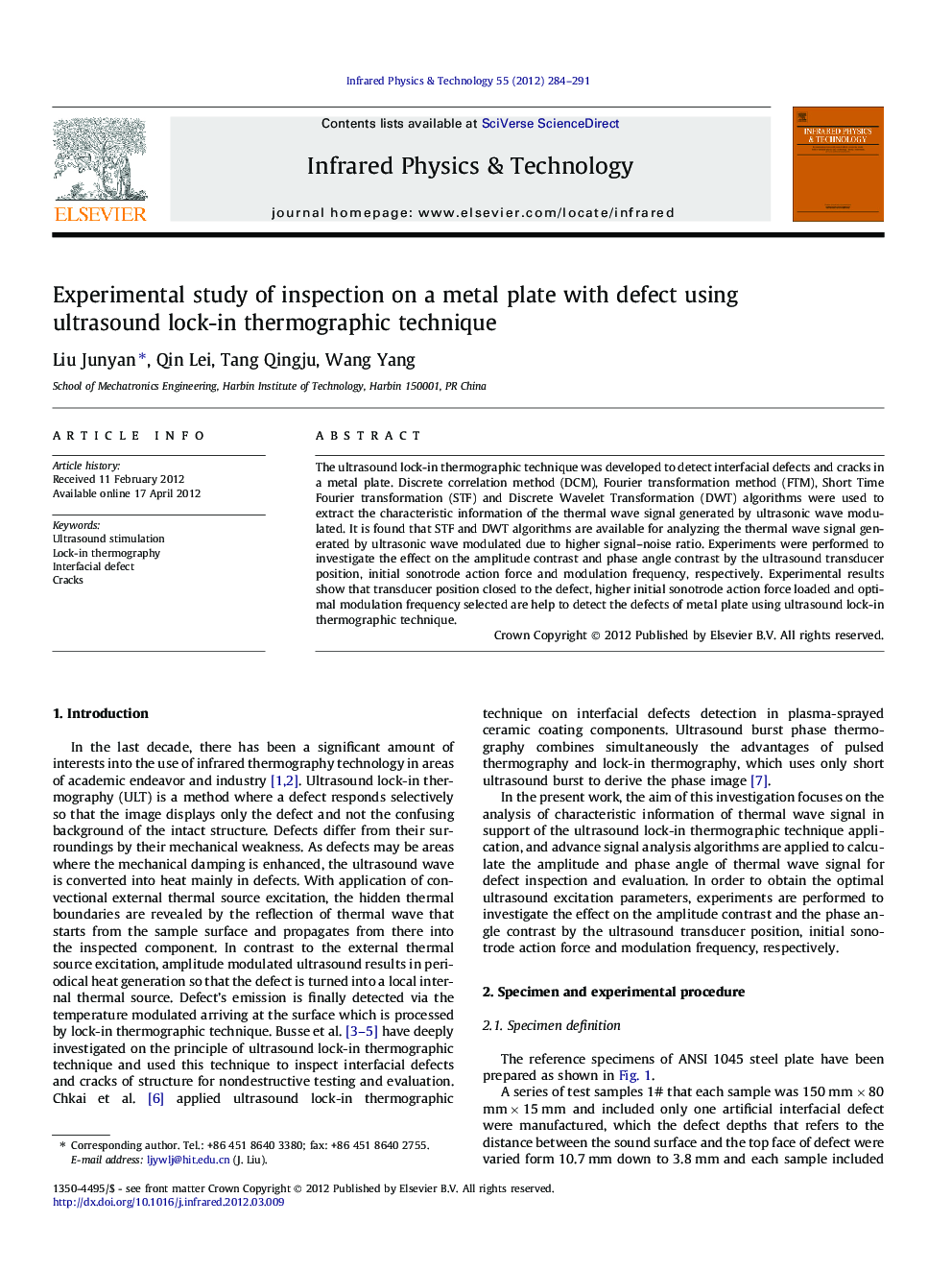| Article ID | Journal | Published Year | Pages | File Type |
|---|---|---|---|---|
| 1784518 | Infrared Physics & Technology | 2012 | 8 Pages |
The ultrasound lock-in thermographic technique was developed to detect interfacial defects and cracks in a metal plate. Discrete correlation method (DCM), Fourier transformation method (FTM), Short Time Fourier transformation (STF) and Discrete Wavelet Transformation (DWT) algorithms were used to extract the characteristic information of the thermal wave signal generated by ultrasonic wave modulated. It is found that STF and DWT algorithms are available for analyzing the thermal wave signal generated by ultrasonic wave modulated due to higher signal–noise ratio. Experiments were performed to investigate the effect on the amplitude contrast and phase angle contrast by the ultrasound transducer position, initial sonotrode action force and modulation frequency, respectively. Experimental results show that transducer position closed to the defect, higher initial sonotrode action force loaded and optimal modulation frequency selected are help to detect the defects of metal plate using ultrasound lock-in thermographic technique.
► The ultrasound lock-in thermography has played an important role in NDT. ► STFT and DWT algorithms are available for ANSI 1045 steel with through cracks and subsurface interfacial defects detection. ► Defect detectable probability is affected by the ultrasound stimulation parameters. ► The optimal stimulation parameters are obtained by experimentally investigation.
